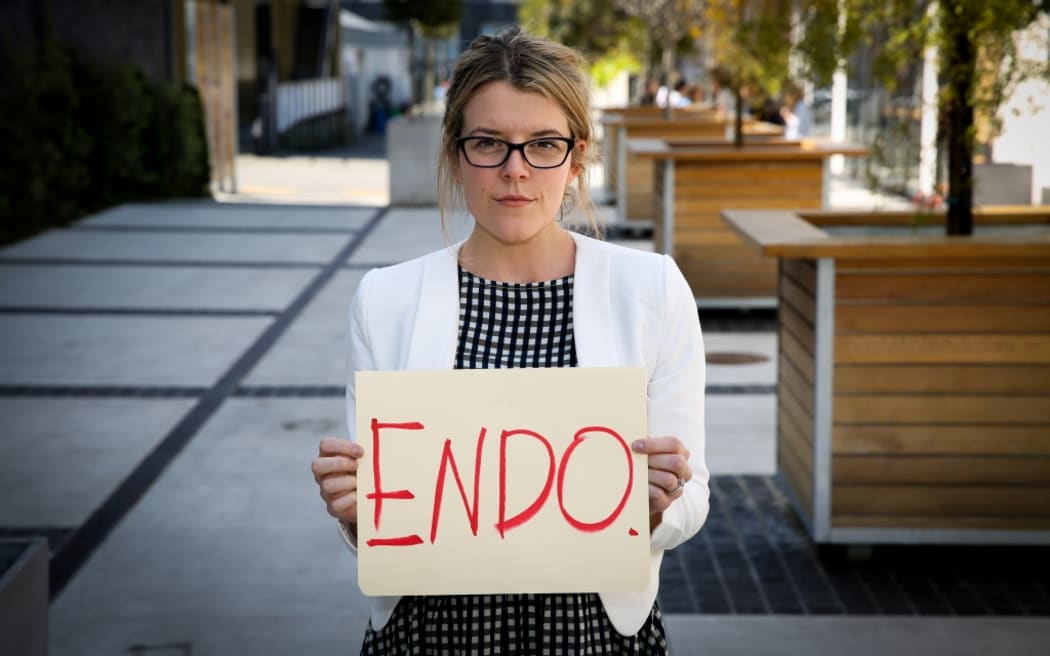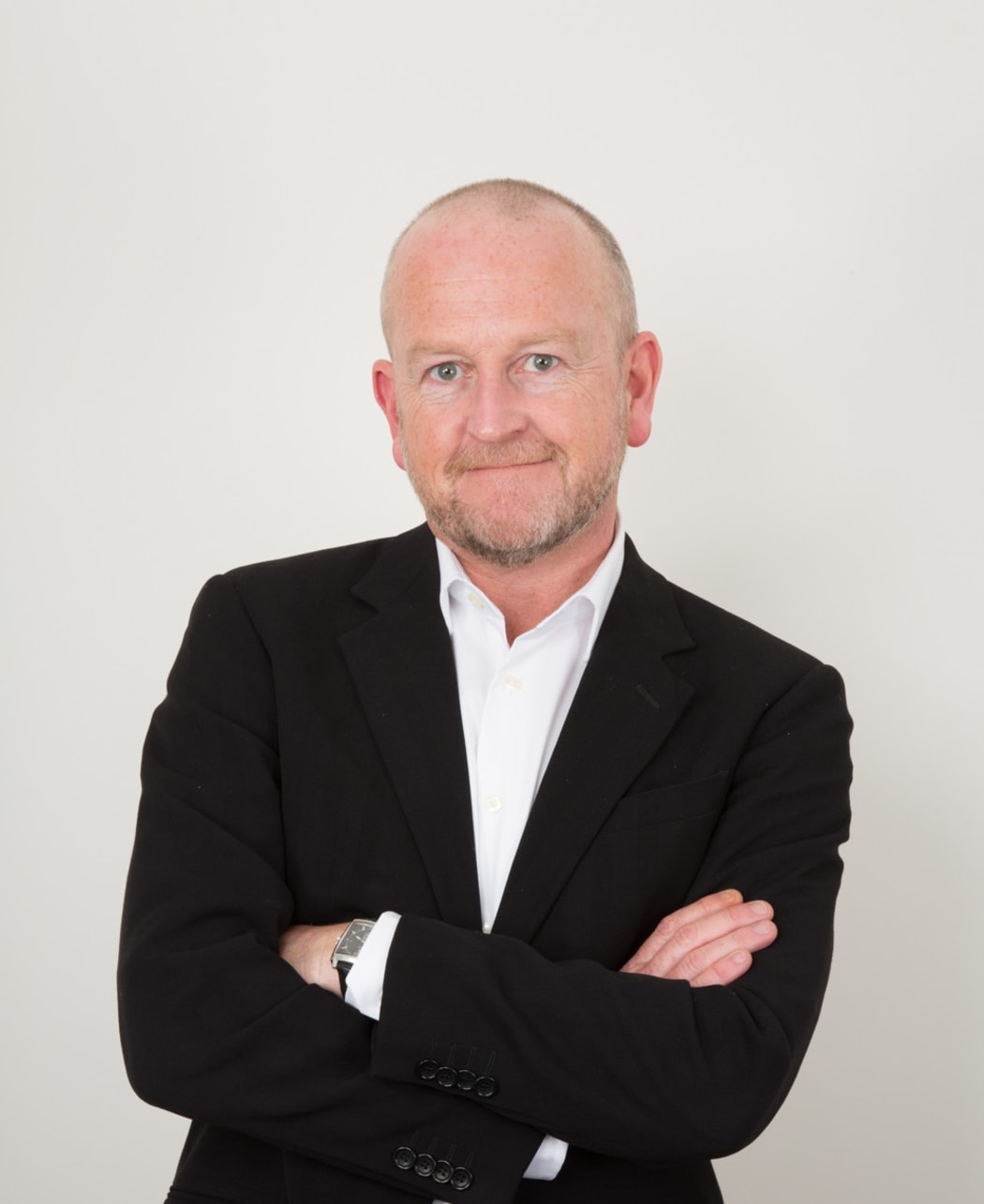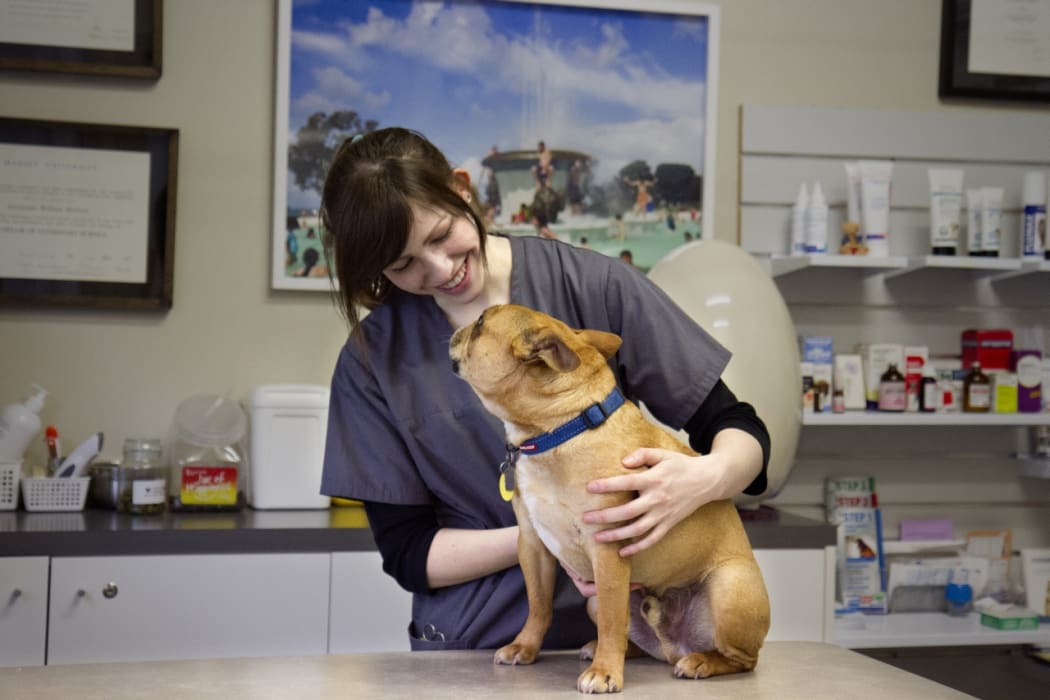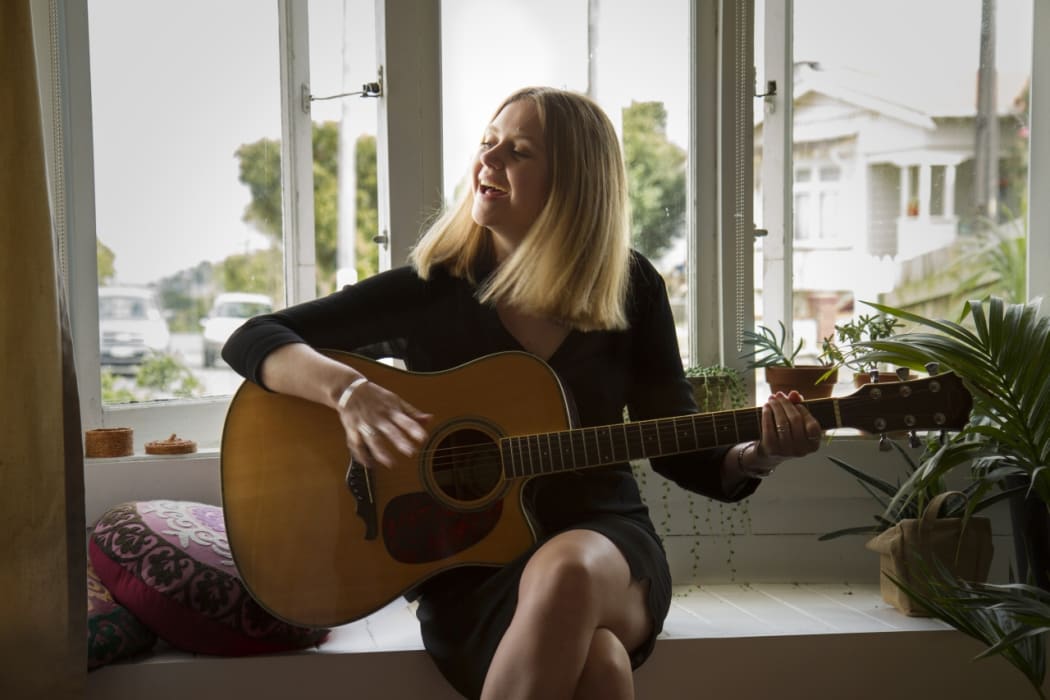One in ten women suffer from endometriosis and it's a disease that can lead to a life of pain, depression and infertility.

Emma Fairmaid Photo: Alexander Robertson
When a medical professional sits you down and says there is nothing else they can do, it’s a pretty devastating moment.
When Emma Fairmaid was 22 her surgeon said the endometriosis growing inside of her was too aggressive and, after multiple surgeries, he couldn’t do much else. He suggested she go on the sickness benefit.
“Being told that was one of the lowest points of my life. I completely and utterly broke down.”
Since she was 11 years old, Emma has experienced unrelenting pain that she describes as “deep ache” in her abdomen. Nearly eight years later, it still affects her daily.
“The majority of my days are spent in some level of pain. I don’t even remember what it’s like to live a normal life anymore. I’m sitting here now and I nearly want to undo my pants because I’m completely swollen.”
READ: Seven Kiwi women speak about life with endometriosis
Emma, 23, is remarkably positive for someone who has been in and out of hospital nearly 30 times. She giggles as she explains how her doctors have probably seen her vagina more than her husband. But her positivity is born out the necessity to look on the bright side.
About one in 10 women suffer from the condition called endometriosis (en-doh-mee-tree-oh-sis) that can leave them in excruciating pain. That’s at least 120,000 girls and women in New Zealand – more than the population of Dunedin city.
At least 176 million people worldwide have endometriosis, but since the condition often goes undiagnosed, that number could be much higher.
“Endo” is currently incurable. It’s also reluctantly talked about since the idea of menstrual blood, vaginas, and ovaries send some into a panic.
I wasn’t even comfortable in my own skin, let alone someone else getting all up in my hoo-ha.
Endometriosis occurs when tissue similar to the lining of the uterus is found in places it shouldn’t be. It usually ends up in the pelvis, around the ovaries, but can also wander into the bladder, bowel, or even intestines.
This out-of-place tissue behaves like the lining of the womb, bleeding every month and causing havoc on the body. It can cause persistent pain that one sufferer describes as “like the reverse bear trap” in the ‘Saw’ movie. It can also destroy women’s reproductive organs, depriving them of the choice to bear children.
And it isn’t just “women’s troubles”; this is a disease that can cause many to suffer through a life of pain, depression and sometimes infertility.
For Emma, it all started a year before she got her period at 11. Stabbing pains in her pelvis grew more and more unbearable, to the point where she was missing school, curled up in bed.
“As I got older, the pain wasn’t just at certain times of the month, I was in pain the majority of the time.”
Symptoms often crop up for the first time when girls go through puberty and some go through their entire high school career with the condition undiagnosed. In some cases, that means multiple days off school or even having to drop out altogether.
LISTEN: Chief executive of Endometriosis New Zealand, Deborah Bush, says more education is needed
Emma was referred to all sorts of doctors, from bladder specialists, psychologists, pain management teams, rheumatologists and gastroenterologists. When she got to high school, she was finally sent to see a gynaecologist: a doctor who specialises in the female reproductive system.
“I remember when I got told I needed to see a one I bawled my eyes out. I was 15 and I couldn’t understand why I needed to go see someone who deals with lady parts. I wasn’t even comfortable in my own skin, let alone someone else getting all up in my hoo-ha.”
The gynaecologist found “little black speckles everywhere”, a sure sign of endometriosis. She went into her first surgery not long afterwards and since then, she’s had at least four more.
The toll on Emma was not only physical - her mental state suffered too.
“There is a thing called endo belly where your stomach swells. You don’t know what you look like anymore and eating becomes unenjoyable because it hurts.”
Her complicated relationship with food and her body culminated in an eating disorder. It was a “double whammy” of illnesses that Emma had to deal with while hearing everything from “you’re just being a girl”, “you’re an attention seeker” to “suck it up, we’ve all got problems”.
But in the face of adversity, Emma has prevailed. She found a new surgeon, one who she says “gets her” and takes a holistic approach to her health. She started a design business, and seven months ago, she got married.
There is still some pain but with medication, supplements, and ongoing surgery, Emma will live a fulfilling life.
“I don’t have as long as others to make babies. We’ve been told we need to start trying. Luckily my husband adores children and wants them quicker than me!”
THE COST OF ENDO
It takes eight years on average to be diagnosed with endometriosis and one reason is because young girls are told period pain is normal.
Gynaecologist Mr Simon Jones specialises in treating endometriosis and says while many women get uncomfortable menstrual cramps, distressing pain is a sign that something is wrong.

Simon Jones Photo: Supplied
“When you’re missing work, you’re missing school, and it’s interfering with relationships, that’s when it’s not normal.”
Endometriosis is often classified as mild, moderate or severe and referred to as “stages” from one to four. But, to add to the complexity of the condition, the stages do not necessarily correlate to the amount of pain someone may be in.
“Basically you could just have one little spot of endometriosis and be the most distraught with pain, or you could have stage four disease and not know until you try and get pregnant.”
The cause of endo is still elusive, although researchers are trying hard to find out. Wild theories have circulated for decades – from tampons to abortion – but no scientific evidence backs any of these.
One theory is that retrograde menstruation has something to do with it. Genetics likely plays a part, too: if your sister or mother has the condition, you’re about six times more likely to have it, says Jones.
Endometriosis costs the country over $1 billion per year in public medical and surgical procedures and it’s the most common private health insurance claim [PDF] for Kiwi women aged 21-50.
One study across 10 countries found that the economic burden of endometriosis is similar to that of diabetes, Crohn’s disease, and rheumatoid arthritis.
It’s also estimated that the toll of endometriosis in lost productivity is about 11 hours a week for each sufferer.
“This is a significant condition that a significant number of New Zealand women suffer from. It has huge implications on productivity, education and on the social lives of people,” says Jones.
If New Zealand tried to treat all the women with stage one endometriosis, there would need 250 gynaecologists operating 14 hours a day, every day of the year, he says.
“We’re never going to be able to operate on everybody. There is always going to be unmet need.”
“It’s not a disease like breast cancer or prostate cancer that grabs attention, but this is probably affecting much more women on earth on a daily basis and it’s not getting the attention it requires.”
Lauren Hastings says she’s lucky. At 19, she’s already had three invasive surgeries and a colonoscopy, but at least she’s endometriosis free.
“I know it will come back, there isn’t a cure for it and that’s just something I have to live with, but I’m still young so I’m lucky. There are people out there who are still suffering.”
Lauren got her period when she was 12, but the pain didn’t kick in until a year later.
“It felt like someone was stabbing me in the right side of my stomach. Just constantly stabbing and ripping.”
Her periods were incredibly heavy and although people told her it was normal, she knew having to wear three sanitary pads at once – going through about eight each day – wasn’t usual. Doctors tried everything, from CT scans to ultrasounds, but couldn’t see anything wrong.
“The pain made me feel like I was going to throw up so I had heaps of time off school. My teachers didn’t believe me and rang my mum to see if I was actually sick.”

Lauren Hastings Photo: Luke McPake
In the toughest times, Lauren found comfort in her furry friends. Her pet cats would find their way to her lap whenever she was feeling her worst and now, she’s turned her love of animals into a career by studying vet nursing in Auckland.
“Animals do know when you’re upset, I really believe that. That was the one thing that would help me mentally, almost like stress relief. I’d go and cuddle a cat and or go see a Labrador. They don’t judge.”
At 15, Lauren went in for her first laparoscopy: an invasive surgery where a tiny video camera in thin tube is put through an incision in the belly. Right now a “lap” is the only way to conclusively diagnose endometriosis.
Looking back now, Lauren can’t help think the surgeon didn’t know what he was doing – he came back and told her she had a “perfect pelvis” but, last year, the stabbing pain came back with vengeance. Doctors told her she had probably developed ovarian cysts that would eventually go away.
I felt like finally somebody understood that it wasn’t just in my head after being it told it was for such a long time.
The same story played out like a bad dream. Once she woke up in her university dorm room in excruciating pain and was taken to hospital, but doctors sent her home after not identifying a problem. The next day, it happened all over again.
“When we called an ambulance, they were trying to convince me that my pain wasn’t that bad. They put me through to a nurse who asked how bad my pain was.”
Between tears, Lauren explained that it was excruciating and was eventually taken back to hospital. A scan revealed a massive 6cm cyst sitting on her ovaries – the smaller cysts that had developed months ago had ruptured and turned into even bigger, more painful growths.
Lauren went into emergency laparoscopy and the surgeon found endometriosis everywhere.
“He was really surprised how bad it was considering my age.”
Lauren had her third lap this July to remove all the endometriosis that was in her pelvis and on her bowel. The results have changed her life and she lowers her voice a little, as if to make sure to fully communicate the weight of her statement:
“I have no pain. It’s incredible”
“It’s almost weird because I’d been in pain for six years and it had become normal, now that I don’t have it at all. I felt like finally somebody understood that it wasn’t just in my head after being it told it was for such a long time.”
Lauren is now looking to start a support group for other endo sufferers in Auckland. Her goal is to inspire people to hold on to hope and keep as positive as possible.
“People say to me ‘oh, just endometriosis’ but it’s not ‘just’ endometriosis; it’s really serious and it can ruin your life.”
A PUZZLE PIECE

Susannah Bull Photo: Luke McPake
In her first year of high school, Susannah Bull remembers calling her parents to pick her up after her period become unbearable.
“I embarrassingly threw up outside my principal’s office in her garden. I was mortified but she said it was great fertiliser.”
Despite the pain, Susannah didn’t think anything was wrong. She’d heard periods were meant to hurt and carried on without a second thought. Her menstrual pain seemed to subside as she got older but, a few years ago, her stomach began to play up.
“It was almost like a reaction to food that I hadn’t had before. I went to see all sorts of medical professionals and they came to the conclusion that I had Irritable Bowel Syndrome.”
Susannah started a gluten free diet, but was convinced it wasn’t the solution - not eating gluten helped in some ways, but she was left with unsolved problems.
“Sometimes I’d come home and show my flatmates my stomach. They’d say ‘oh my gosh, you look pregnant’, the bloating just hurts so much. I ended up having certain outfits I’d wear for my bloated days.”
She carried on avoiding gluten but, all the while, her pain got worse. She finished her law degree, landed a job in Auckland, and decided to see another dietician. The 25-year-old was put on an even tougher diet, but all the food restrictions didn’t fix the issues and was making her miserable.
“It was quite stressful trying to maintain an extreme diet. I eventually gave up on it. I was just sick of the fact that I wasn’t enjoying eating anymore and still being in pain.”
It was this time last year that Susannah reached breaking point. In the middle of a conversation with her boss, she became incredibly ill.
“I told him I had to go before I passed out or threw up. I wasn’t sure what was going on.”
She was taken to hospital where doctors suspected she had kidney stones that had already passed. She was sent home. A couple of weeks later, the pain returned in the exact same way. Again she went into hospital.
“I kept getting told – and this was the most frustrating thing – that I was a puzzle piece. I kept getting told I was a mystery.”
Susannah has, in her toughest moments, turned to her love of music. She’s been writing and performing for years but at her sickest, she wasn’t even able to do that.
“When I was really sick, it hurt to sing. I listened to a lot of music instead. I even wrote a song about endometriosis.”
Susannah’s mum had an inkling from the start that her daughter was suffering from the condition. She sent through research and stories she’d found online and Susannah decided to see a gynecologist. Once her doctor heard the symptoms, Susannah booked in a laparoscopy immediately.
“I remember waking up after surgery and still not knowing if they’d found anything. The surgeon said there was significant endo and he was certain that he got rid of all of it.”
Susannah was only diagnosed last year and is still figuring out how to manage life with edno. She’s had to start thinking about children, managing pain, and future surgeries - all things that she hadn’t given thought to 10 months ago. She’s grateful she now has answers, but wishes she’d had them sooner.
“I don’t blame any medical professionals because the symptoms are so similar to those of other conditions. But I think they need to be a bit more aware, especially with young girls, that it could be endometriosis.”
SIGNS & SYMPTOMS OF ENDOMETRIOSIS:
- Severe period pains
- Heavy menstrual bleeding
- Irregular periods
- Bowel problems like diarrhoea, constipation, bloating, or painful bowel movements
- Pelvic pain
- Pain during or after sex
- Fatigue
- Lower back pain
- Depression, anxiety, irritability
For more information or support, visit the Endometriosis New Zealand website. You can also call 0800 733 277

